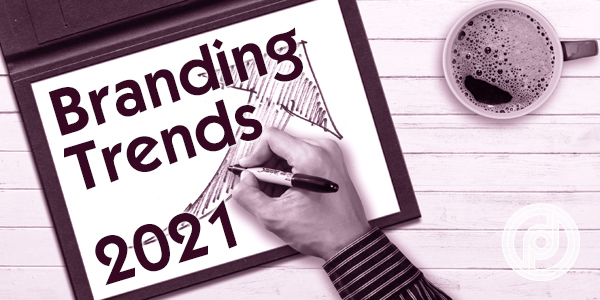
21 Brand Strategy Trends for 2021 That You Need to Know so You Can Leverage Those Relevant to Your Business to Achieve Higher Revenue
2020 was an unexpectedly intense year, which matters because of how it impacts brand trends in 2021. Consequently, business leaders, decision makers and brand owners or managers have been inundated with multiple factors demanding their attention.
In highly dynamic hostile markets brands have to adapt rapidly to stay relevant, mitigate risk and leverage new opportunities to achieve higher revenue. However all that unpredictability can distract from longer-term strategic considerations which are important for brand health and growing commercial prosperity.
Here we’re bringing your attention to 21 important brand trends because there’s quite a number that will impact your business, if they haven’t done so already. As you read through the various brand trends shared below you can evaluate which to leverage in the context of your market, primary audiences and product or service so you can plan effectively how to take your brand to the next level in 2021.
1. Community Mindedness to the Fore in Brand Trends
The pandemic has directly influenced many brand trends which are already emerging for 2021.
For example, it led to a big shift towards the power of communities. The power of common purpose, common values or common needs has become more obvious both offline and also online. We expect to see this continue, not least because people have shifted their expectations.
Brands need to be seen to play a role within this community narrative rather than floating outside it. Some have always done this well. They need to continue and other brands which have not paid much attention to communities before will likely begin to do so.
2. Brand Trends Are Moving Back to Basics
2020 made people focus on basic needs, from social contact to food. This accelerated the prior trend of decluttering and expanded it into a more holistic point of view around focussing on basic necessities.
This will not apply to all brands. Some brands are inherently complex, though even if a product or service is complicated, that doesn’t mean that it cannot have an elegantly simple approach to brand strategy. For many brands, there is a growing opportunity to provide simple, effective solutions to basic needs.
We know that sometimes it’s a struggle to build a brand strategy that really engages your ideal customers effectively, particularly in hostile markets, so we’ve developed three different ways of working with us to help you build your brand, depending on your preferences, so if you’d like us to:
- Build your brand for you – find out more here or get in touch [email protected] or ring +353 1 8322724
- Empower you to build your brand – check out the Persona Brand Building Blueprint™ Leadership Mastermind here. This is a live, interactive programme online where you work on your brand with us codifying and mapping out your brand strategy for business growth. Alternatively, join our online half-day Branding Accelerator Masterclass for a fast-injection of brand building essentials. Ask about our Personal and Corporate Leadership Brand Alignment Masterclass
- Want a DIY solution? check out our how to build a brand eprogramme here and our how to audit your brand yourself eprogramme here
3. More Focus on People in Brand Trends
People have been critical throughout the pandemic. So-called key workers came to the fore and internal branding has shifted in many companies to pay more attention to the contribution of all members of the team including some who are often not visible or valued as highly. This can be customers too.
Sometimes, brands can get caught up in technology or impersonal communication. That might be at the expense of the people in its brand story or brand strategy. But people are central to most brands and that will continue to be more prominent in 2021.
Related: Top 5 Ways to Build Profitable Brand Relevant Consumer Tech in a Storm of Massive Change
A simple case study is delivery drivers for UK supermarket Asda wearing “happy to chat” badges [1]. This recognised the fact that, while delivery drivers aren’t social workers, they may be the only people some old customers regularly interact with personally. This is a cheap, simple way for the brand to show it is engaging in the community.

Image via Country Living
4. Brand Trends include a Focus on Mental Wellbeing
Increasing attention has been paid to mental wellness and we expect that this trend will continue across ever more categories and brands in 2021.
There is a heightened awareness amongst brands and customers both in the B2B and B2C spaces. This includes the need to support, champion and integrate mental wellbeing into a brand’s overall worldview. Again, this was a growing trend in recent years. The pandemic, lockdowns and financial implications have made it an urgent, vitally relevant brand trend for 2021.
This doesn’t mean that brands are expected to become experts in the serious topic of mental health. As a brand, it is always important to stick to your own brand heartland. But even a soft nod to mental wellbeing will become more important in how a lot of brands address their markets as well as their own people.
Related: Branding Psychology in Adversity – 7 Ways You Can Embrace Behavioural Shifts to Grow Your Business
5. Mindful Shopping is Amongst 2021 Brand Trends
There has been a clear, rapid shift in how people approach shopping. This is driven by a number of factors, including increased concern about excess packaging and a desire for a simpler life. This is translating to a reduction in wasteful consumerism and more support for businesses who brand themselves as local, ethical or personal. That is important for brand stories, because brand stories help embed the brand into customers’ memories and resonate with customers’ move towards more mindful shopping.
Related: 7 Ways Brand Collateral Helps You Grow Your B2B Business Profitably Even in a Hostile Market
6. Brand Trends Demonstrate Local is Good
For many years, globalisation obscured supply chains for end consumers. The pandemic highlighted systemic vulnerabilities that this helped create. As a result, consumers have become more focussed on where things physically come from. In the U.K., this will be exacerbated by Brexit.
This doesn’t necessarily change the role of provenance in itself for a brand. It means that consumers increasingly prefer to understand provenance. For some categories, imports will continue to be attractive. But for other products or services, localness will be a badge of reliability and convenience.
Related: Top 5 Ways Indian Brands Win in the Global Market
Combining the trends in provenance, community and sustainability, it makes sense that for many brands, local production is seen as positive. This depends on the category in question. For food, for example, local supply continues to increase in importance.
For some B2C and B2B brands, localness is seen as positive in terms of managing stockpiles and political challenges. But for categories such as energy, building materials and tech, for example, localness often brings little extra value to a brand. As always, this is not just about supply but also about service: some brands can emphasise the local nature of their service offering, which serves to obscure focus on the origin of the product itself.
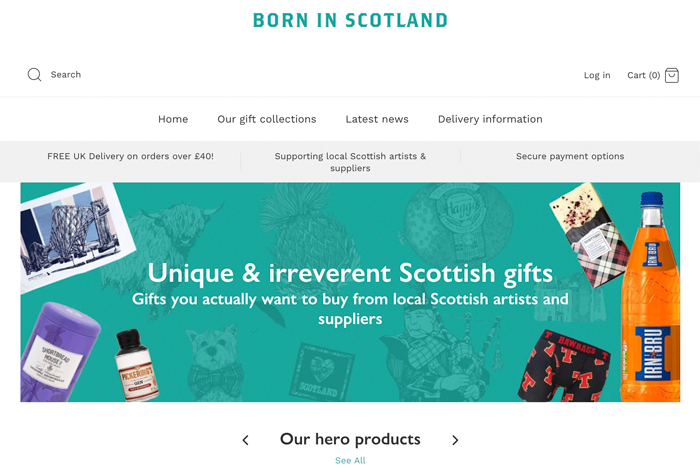
Image via © Born in Scotland
A case study of this localness trend is Born in Scotland. As the brand name suggests, this is a fast-growing chain of shops showcasing Scottish made products [2].
Related: 6 Ways To Use Family Business Branding To Drive Growth and Maintain Relevance Through The Generations and Adversity

7. Social Responsibility is a Bigger Driver in Brand Trends
Along with the renewed sense of community, brand building increasingly includes assessment on the basis of a brand’s social responsibility efforts. ESG was a key theme in 2020 and we expect this to continue apace in 2021.
Customers are becoming more focussed on the details of such efforts, as was seen in 2020 by the backlash against the conditions of workshops producing clothes for online retailer Boohoo. With social media it is becoming more difficult for brands to underdeliver on their ESG commitments.
Related: Social Responsibility, How to Build a Socially Conscious Brand
8. Brand Trends Show Sustainability Matters
As with ESG (Environmental, Social and Governance), there has been a shift from talking to doing when it comes to sustainability. This is now mission critical for some brands, from energy to packaged goods to fast fashion. This shaping of a more sustainable worldview for brands is manifested in a number of ways.
Plant-led food, lab-produced meat (as has now been approved for sale in Singapore [3]), fashion, beauty products, tableware and packaging designed to protect our threatened world is all coming to the fore.
This is changing current businesses, developing new businesses, society and employment opportunities. This has wide-ranging impacts for brands, which are under more pressure than ever to move from environmentally destructive to environmentally sustainable and in many cases net positive. Another manifestation of this trend is carbon transparency. Even big oil brands are trying to reposition some of their activities from climate neutral to regenerative.
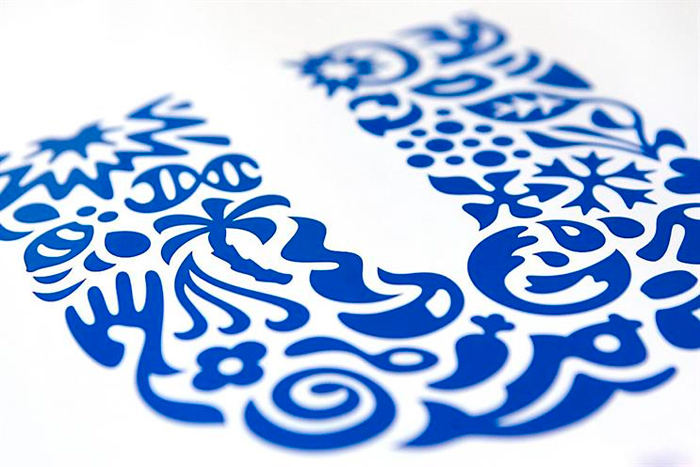
Image via Campaign © Unilever
A case study of this sustainability trend is consumer good conglomerate Unilever’s large-scale commitments to make its supply chain more sustainable.
Related: Profit from The Top 5 Trends of Leading Brands in China Before They Hit Your Market
9. Anti-Monopolistic Sentiment Grows in Brand Trends
Apple’s recent cut in commissions for the App store is a step down from its previous dominant position [4]. While Apple still controls the walled garden of its user environment, this is a significant concession to content producers. Apple is just one example, the same sorts of pressure are coming to bear on other tech brands such as Facebook and Google. But this isn’t just about tech, B2B brands such as auditors have felt similar anti-monopolistic pressure, which after 2020’s Wirecard scandal is likely to increase.
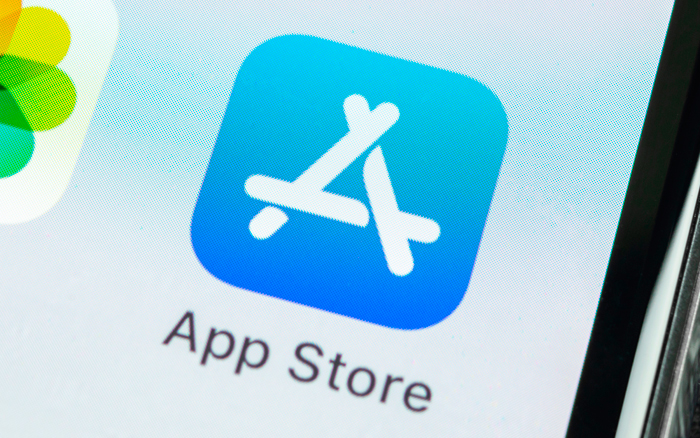
Image via Dice © Apple
This is in parallel to increasingly anti-monopolistic pressure on big tech brands [5]. The same thing is happening in China, where tech giants Alibaba and Wechat are facing closer scrutiny of their market dominance.
We expect this to continue and tech brands opening up their network more will be a trend in 2021.
10.Experiential Grows in The Roaring Twenties Brand Trends
After a trying 2020, people want release, experiential interaction and enjoyment. It may not be obvious from the start, but as 2021 progresses, there will be a shift to seeing the decade as the roaring twenties. Brands will have permission for exuberance and decadence, if done sensitively.
Are you a business leader, manager or entrepreneur who wants to re-evaluate or build your brand strategy so you can embrace the brand trends of 2021 to increase your sales? Are you curious about how to build or scale a highly successful standout brand? Join one of our branding masterclasses because they empower you to build your brand, enhance customer experience, expand your market impact and create higher perceived value so you can command a premium.
In fact, the Persona Brand Building Blueprint™ Mastermind is all about fast-tracking you, your brand and your business through the brand building, agile branding strategy process using professional big-brand know-how with proven systems that get results so you can grow your business faster and more effectively.
The programme enables you to make your brand highly visible, different, credible, trustworthy, memorable and much loved amongst your ideal customers so you can become more profitable and leave your competitors way behind. Be The One — your ideal customers’ favourite brand of preferred choice commanding a premium.
If you want a tailor-made solution specifically for your brand then we also provide inhouse bespoke Persona Brand Building Blueprint™ Intensives working with you and your team so you can grow your business faster and more profitably. Contact us to discover more [email protected] or +353 1 8322724
11. Brand Trends Underpin Stronger Appreciation for Seizing the Day
The pandemic caused a lot of consumers to reassess their lives and lifestyles. The same happened at the company level for some brands. It was a fundamental opportunity to assess brand purpose, brand mission and brand values.
This affects everything from work/life balance to postponed luxury expenditure. With a heightened awareness of life’s unpredictably across almost all consumer types, there will be an increase in carpe diem thinking.
Related: How Your Brand Mission Enables You To Achieve Your Commercial Objectives
12. Forced Flexibility Expands Amongst Brand Trends
The pandemic forced a lot of brands and indeed consumers to be flexible through necessity not choice. This will now be turned into a virtue by some brands, with rapid repurposing and multi use coming to the fore in some brand positioning.
Related: Boring Brand? How To Create a Unique Brand and Market Positioning
The promise of 3D printing has yet to come to fruition in the way some people forecast. But there is a clear trend encompassing everything from 3D printing to flexible workspaces and adaptive workforces. Brands are increasingly operating in a mode of constant innovation and flexibility. There is a breaking down of barriers, and faster adaptation to change.
This trend can be an opportunity but it is also a significant challenge. Without a clear brand strategy, brands which are highly flexible can end up confusing customers and lacking clear reasons to exist. In a world of flexibility, structures can become more, not less important – but it is about knowing what does need structure, as well as what needs flexibility.
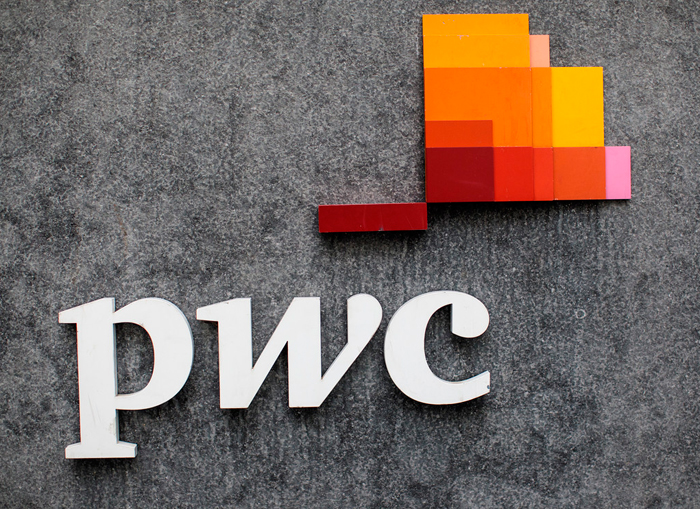
Image via Marketwatch © pwc
A B2B case study is the professional services firm PwC. They are allowing staff to continue working from home, even after lockdowns end. This fits with its increasing brand focus on the shifting skill set leaders need for a digital world.
Related: Building a Resilient Brand and Business, 10 Lessons From Brands That Have Thrived Through Market Stress

Book Your Brand Audit Consult with Lorraine Carter here
13. Brand Trends in Turning on a Dime to Survive & Thrive
The only way some brands have survived 2020 is by changing dramatically what they do, overnight. This has been seen especially amongst hospitality brands. For example, Singapore Airlines has offered on ground dining and hotels have moved to offering rooms as workspaces not sleeping spaces. This is an acceleration of an existing trend of brands trying to use their assets around the clock, which is set to continue to grow.
It’s easier to turn on a dime in a useful way when you are already clear about your brand purpose, brand mission and brand values.
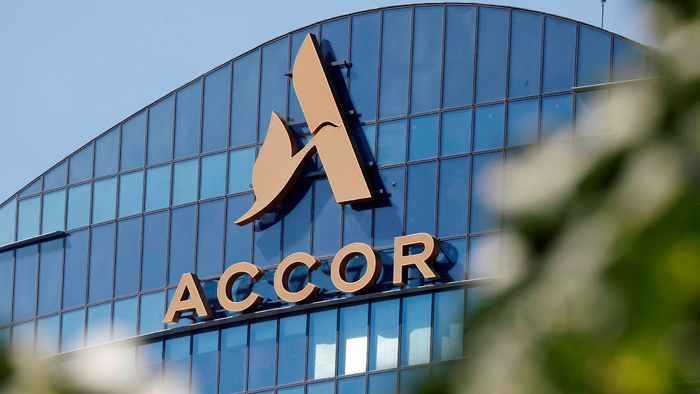
Image via FT © Accor
A case study is provided by hotel brand Accor promoting their hotel rooms as office space [6]. The reason the Accor brand has permission to do this more than many hotel brands is its “Live Limitless” brand positioning.
Related: Companies on a Mission, Discover How These Powerhouse Brands Bring Their Brand Mission to Life
14. Brand Trends Underpin A Push for Optimism
The past few years have felt draining for many consumers. Brands have tried to engage with them but with mixed success. In 2021 a lot of consumers will be consciously trying to be optimistic, even if they don’t actually feel that way.
Brands which make a concerted effort to bring good cheer will capture the mood in 2021. That isn’t carte blanche for saccharine sentimentality, but an adult focus on choosing optimism over the drumbeat of despair.
15. Brand Trends Include Virtual Breakthrough
Virtual Reality (VR) accelerated into the mainstream with virtual work and home life. Like many brand owners, I experienced this move towards it in events run by IBM and Dell, and using platforms like Hopin, Zoom and more. This turbocharged brand building trend is set to continue into 2021.
16. Real Limited Edition Brand Trends
The upper end of the luxury market continues to grow strongly. Brands continue to use limited editions to shift volume, but there is a move to an approach where the limit is not artificially imposed but comes from finite resources or an approach based on creation per customer.
Related: 7 Luxury Brand Resilience Principles You Can Leverage to Grow Your Profits in Hostile Market Conditions
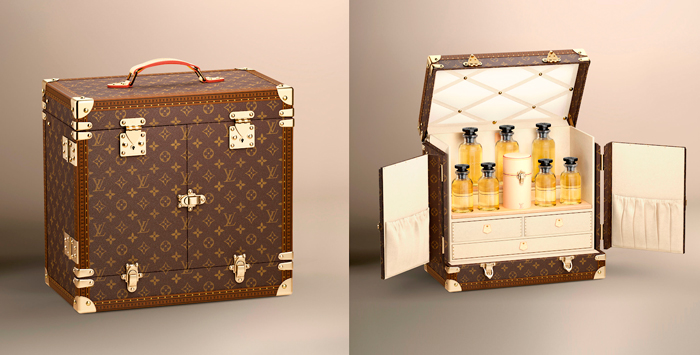
Image via Christies © Louis Vuitton
A case study is luxury brand Louis Vuitton’s personalised perfume launch [7]. Charging 600,000 euros per customer, the perfume is created especially for a customer, based on everything from their olfactory preferences to lifestyle choices.
17. Luxury Everything & Higher Margin Brand Trends
Luxury means premium pricing and higher margins, so it continues to spread down the value chain. While not all categories genuinely lend themselves to luxury positioning, almost all brands can now consider whether a luxury version might suit them. This trend has been ongoing for some years and is set to continue apace in 2021.
Related: Profitable Lessons from Luxury Brand Leaders, Brand Positioning for Premium Pricing
18. 2021 Brand Trends include a Switch to Online Learning
Analogue versus screen time learning, creativity and innovation have transformed due to the pandemic. That means that swathes of customers are now used to learning online in a way which they were not before. This is relevant for brands because it includes a responsiveness to bite-sized informative nuggets, not just large learning challenges. This is an opportunity for brands to use the power of the digital era to connect with their users with brand education.
19. Non-Human Decision Makers – A Growing Factor in Brand Trends
Whether it’s a move to luxury dog food, the role of robots, or AI-led purchasing, we are seeing an increasing number of non-human actors as decision makers.
Related: Using Buyer Personas to Increase Your Business Profitability
This reiterates the need for brands to understand their target market. This can be users and purchasers – who may not be the same – as well as influencers. What a dog chooses in its taste test, or an AI-enabled retail robot picks, will not necessarily reflect the human decision trees still used by almost all brands.
Related: How to Use Influencers to Grow Your Brand and Open New Markets
A simple case study is Heights Farm Pet Foods. This is one of a growing number of premium pet food brands whose products offer the sorts of functional benefits more typically associated with human food brands. That reflects the fact that pet owners are spending more on their pets and sometimes involve them in decision making, for example through taste trials.
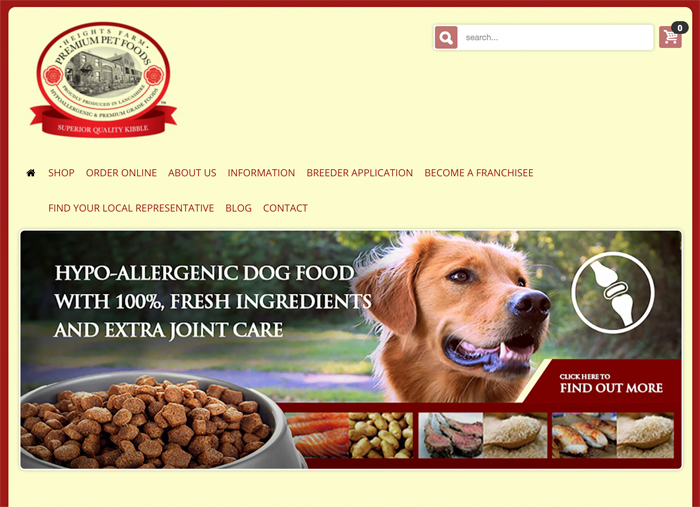
Image via © Heights Farm Pet Foods
If you’d like to discover more about building and maintaining a thriving, high performing, highly profitable standout brand, then get in touch because we’d love to help you make your brand into a profit powerhouse.
- Schedule an chat — we can meet in person online
- Let’s consider a customised plan for you
- And perhaps implement the plan together
- Contact us [email protected] or ring +353 1 8322724 (GMT Dublin/London time 9:00 – 17:30 weekdays)
Lorraine Carter is a branding expert and international speaker delivering talks that inspire and motivate along with actionable masterclasses and workshops that inform and support transformational outcomes fast, and consultancy expertise that solves problems — using agile branding strategy underpinned by professional big-brand know-how — so you can outshine, outperform and leave your competitors way behind.
She enables you to differentiate, achieve higher revenue, expand your market share, build IP brand asset value — make the complex easy as ABC so you can Transform Your Brand & Increase Your Sales — Be The One, the brand that’s most credible, trusted and commanding a premium so you’re highly profitable and leaving your competitors way behind.
Ask about the Persona Leadership Branding Strategy Mastermind — live, interactively, face-to-face online.
20. More Measurability in Brand Trends
The digital revolution has led to more measurability on brand ROI. This will continue, especially because more brand building will be done under straitened financial conditions, so decision makers are conscious of what they invest.
This trend also applies to supply chain traceability and other parts of brands. Brands will be more accountable because the market and their customers are demanding it.
21. Brand Strategy Drives Success in all Brand Trends
One thing which we know won’t change in 2021 is the foundation for brand success. The amount of new trends, market shifts and pace of change make it more important than ever to have a well-thought-out foundation which is able to adapt to a changing marketplace. Brand strategy sits under brand success, regardless of how it is brought to life in the marketplace because it is one of the essential driving factors enabling a business to thrive through and harness change.
Related: How Branding Strategy is Different to Marketing
Final Word
2020 was an unexpectedly challenging year in which to develop and manage many brands. Looking ahead in 2021, although we do not know how the year will unfold, having an insight on the key brand trends will help you prepare better for the year, come what may.
Understanding these trends will also help you harness new growth opportunities, be that through, for example, new product development, verticals, routes to market or new channels.
In evaluating these 21 brand trends, it is important to remember what is constant, as well as what is new. From the right brand strategy upwards, getting your brand in the best position to succeed will also make it better able to use 2021 brand trends as a driver to further growth.
Questions to Consider
- What is your brand’s purpose, vision and mission? What are your brand values?
- What do you do to understand how your customers are thinking and feeling?
- Which of the 21 trends above do you think could have the single biggest impact on your brand and revenue growth in 2021?
- Do you have a system to measure how your brand communication matches the mood and feelings of your target customers?
- How well has your brand strategy served you in 2020 and how do you expect it to perform in 2021?
- Could you use a brand audit to better evaluate your strengths, weaknesses and new opportunities for innovation and growth?

Book Your Brand Audit Consult with Lorraine Carter here
Your Persona Client Satisfaction Guarantee
- When you work with us we’ll create a customised brand building plan and strategy with clear investment for you tailored to your specific requirements and preferences
- You’ll know each step of your brand building journey before we start because we’ll discuss it, document it and agree on it with you before work commences
- You’ll have timelines, key milestones and deliverables to evaluate and approve for each stage and part of your brand building process
- Because we know the unexpected sometimes happens we can make adjustments along the way if you need it and if something extra is requested we’ll ensure you’re fully appraised about what that entails before committing
- As we achieve pre-agreed objectives you’ll be able to evaluate your brand building work and strategy in progress, coupled with the outcomes to ensure return on investment
Get in touch today because we’d love to enable you to re-evaluate and build your standout, powerhouse brand so you can Be The One — achieve higher revenue and leave your competitors way behind.
Email us [email protected] or ring us +35318322724 (GMT 9:00-17:30) and ask about our VIP Brand Strategy Re-Evaluation.
Sources
- https://inews.co.uk/news/consumer/asda-delivery-drivers-happy-to-chat-campaign-covid-induced-loneliness-783058
- https://www.heraldscotland.com/business_hq/18922503.entrepreneur-reborn-switch-retail/
- https://www.bbc.com/news/business-55155741
- https://www.bbc.co.uk/news/technology-54985971
- https://www.theguardian.com/technology/2020/dec/09/facebook-lawsuit-antitrust-whatsapp-instagram-ftc
- https://group.accor.com/en/Actualites/2020/09/coworking-hotel-pop-up-offices
- https://www.ft.com/content/7bf4a3e8-8f76-4c97-9d3d-567bd087d2c3

 “Lorraine Carter has been the catalyst and an inspiration for MGI Learning to clearly define our brand.
“Lorraine Carter has been the catalyst and an inspiration for MGI Learning to clearly define our brand.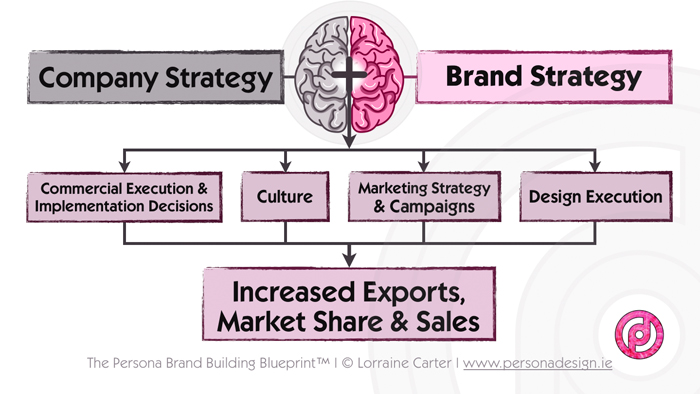
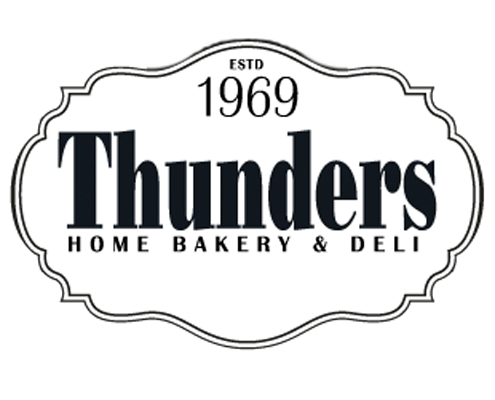
 “For anyone who has a well established business I would totally recommend working with Persona Design because it will provide them with a new perspective on how to think of their brand. You see in different markets and industries that are overly competitive
“For anyone who has a well established business I would totally recommend working with Persona Design because it will provide them with a new perspective on how to think of their brand. You see in different markets and industries that are overly competitive 

